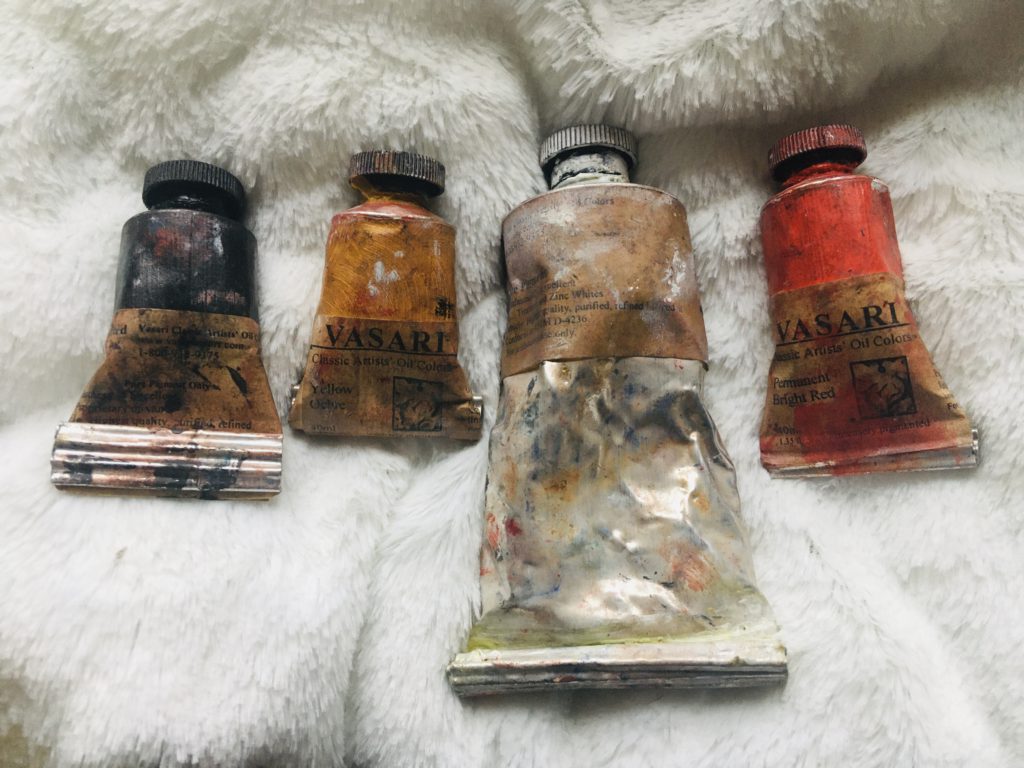My search for a safer way to paint with oil colors have made me research all different types of reds, yellows, whites, and black colors. I have listed them in the Part 1 of Eco-friendly Oil Painting.
The absolute Eco-friendly Oil Painting option is to limit your colors to use natural earth based colors, and eliminate the use of solvents. I hope I can lead up to that in the coming series, so stay tuned!
At the time of writing the Part 1 of this series, I had listed a few options for red pigment, but I actually narrowed it down to Pyrrole Red as mentioned below. Pyrrole Red has been used to replace cadmiums and other reds, and based on my experience, it’s an excellent color.
As of February 2021, my recommended minimal palette for painting portrait stands as follows:
| Color Index | Name | Brand Recommendation | Brand Name |
| PY42 | Yellow Iron Oxide | Michael Harding | Yellow Ochre |
| PW6 | Titanium White | Williamsburg | Titanium White |
| PR254 | Pyrrole Red | Winsor & Newton | Bright Red |
| PBk9 | Ivory Black | Winsor & Newton | Ivory Black |
Above are fine choices for beginner artists. There are cheaper painting options, but it’s worthwhile investing on better paints. In the long run, making solid painting material option will save you considerable time.
I have also used Vasari Oil Paint and I like them very much for its silky consistency. When painting with Vasari oil paints, the tend to require less oil and/or solvent. If you have a few extra dollars, go with Vasari.

| Color Index | Name | Vasari Color Name |
| PY43 | Natural Yellow Iron Oxide | Yellow Ochre |
| PW6 | Titanium White | Titanium White |
| PR254 | Pyrrole Red | Permanent Bright Red |
| PBk9 | Ivory Black | Ivory Black |
Although there are lots of colors one can use for painting now, I am definitely a minimalist when it comes to painting in oil.
Material Links
- Bright Red (PR254-Pyrrole Red; Lightfastness: Excellent) – Excellence choice from organic, red pigment options.
- Yellow Ochre (PY42-Yellow Ochre; Lightfastness: Excellent) – One of the oldest and safest pigment of all times, allegedly enjoyed even by cavemen. Some companies also use PY43, but I prefer Michael Harding.
- Titanium White without Zinc – (Williamsburg: PW6-Titanium White) – This pigment is considered completely non-toxic. Titanium became the most commonly used pigment since 1940s. Be mindful that this Winsor Newton Titanium White contains Zinc White, which has been known to be problematic in the recent years.
- Ivory Black (PBk9-Ivory Black: Lightfastness: Excellent) – Ivory Black is a misleading name since it’s no longer made using Ivory. The ones that are in the market is made from Animal Bones, and is referred to as Bone Black.
Interesting External Content
Non-Toxic Oil Painting